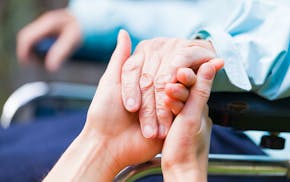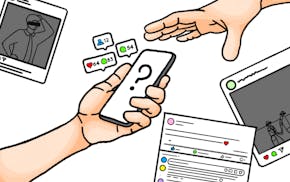Opinion editor's note: Editorials represent the opinions of the Star Tribune Editorial Board, which operates independently from the newsroom.
•••
There are many lingering aftereffects from the COVID-19 pandemic, but among the most welcome recoveries is a rebound in ridership numbers for Metro Transit.
Ridership plummeted during the pandemic, as much of society shut down in a prolonged attempt to slow transmission of the virus. Without a regular flow of paying customers, transit crime — which had been a problem even before then — soared.
How bad did it get? At its lowest point in 2020, ridership fell by more than half. Light rail was hit especially hard, with ridership on the Green Line that runs across St. Paul falling to just 7,000 passengers, down from 44,000 a day in 2019. The Blue Line, which runs across Minneapolis, fell to fewer than 5,000 daily riders from an average of 33,000 in 2019.
The good news is that slowly, ridership numbers have been improving and now they appear to be surging. For January through May — the latest numbers available — Metro Transit provided 17.7 million rides, a nearly 20% jump compared to the same time last year, and on par with national transit ridership trends. And transit officials say ridership is increasing for every mode, whether light rail, bus or bus rapid transit.
That ridership level is a far cry from 2015, when ridership across the entire system peaked at nearly 86 million fares, but remains a significant milestone on the road back.
Metro Transit Interim General Manager Lesley Kandaras told an editorial writer that the combination of stay-at-home orders during the pandemic, mask mandates and staff shortages all took their toll here and at transit systems across the country. "But as we see people returning to their pre-COVID activities, our ridership is reflecting that," she said. "And we expect further improvements." Innovation, a commitment to better and more visible public safety and a hard look at what may be enduring ridership changes will all be part of that, she said.
Kandaras said that "one thing we've learned is that frequent, fast, all-day service," such as light rail and bus rapid transit "has been much more resilient than express buses, which head to downtown from the suburbs in the morning and back in the evening." That, she said, along with the fact that the Twin Cities has more than the typical number nationally of remote workers may prove enduring changes that transit officials are studying.
Happily, students also appear to be returning in large numbers, aided by an innovative Universal Transit Pass introduced last year at the University of Minnesota that has doubled student ridership. Students' transit fee is included in their university fees and a transit function is added to their student IDs.
More operators have also helped boost rider numbers. Kandaras said staffing has yet to return to pre-pandemic levels, but transit officials have hired more than 200 new bus drivers this year, a couple dozen more are in training to become rail operators, and recruitment continues.
Another success story came, interestingly, in the wake of the much-ballyhooed Taylor Swift concert earlier this summer. The concert was due to let out about the time light rail service would typically be ending for the night. After some public pressure, transit officials found the personnel to run additional trains for longer. The result was a confidence booster that demonstrated transit could once again handle large events without incident. It was a phenomenon replicated across the country, leading one story to dub Swift a "public transit icon."
Yes, that was just one weekend. But replicated across a summer and longer, such events help rebuild confidence in public systems and larger gatherings.
A key element of that confidence, of course, is public safety. Metro Transit Chief Ernest Morales told an editorial writer that he is intent on enforcement that is "professional, engaged, empathetic" and, above all, visible.
A retired Navy Reserve veteran, Morales holds a master's degree in protection management and naval experience that focused on high level security matters. Since he started in February, he said, he has focused on hiring "dedicated officers who believe in the agency and the system. ... We need to encourage young individuals to come into law enforcement, a noble and necessary profession."
Civilian ambassadors, he said, will be unarmed but uniformed and will check for fare compliance and on a new rider code of conduct under development. But, Morales said, "they will be working closely with law enforcement."
Morales said his force is 171 full-time officers, "about 64 short." And when he gets those 64, he said, "I will be asking for more because we are a growing system. Additional funding and staffing power will be essential to creating that public safety on board trains and buses and government officials should bear that in mind."
There's more to public safety than enforcement. Morales said a relatively new transit project funded by the Legislature will help get at some root causes by connecting homeless or chemically dependent people on transit to needed services. It also is creating a new coalition that draws on multiple police agencies, including Bloomington, airport police and the U's officers to aid in creating greater visibility, a smart force multiplier.
"The true litmus test will be in October," Morales said, "when it gets cold and we have people seeking shelter in the transit system." Morales said he is convinced that firm, consistent enforcement that also provides options will be key to reducing further incidents across the system.
There are a number of solid elements in place as Metro Transit tracks its return to normalcy. It may well need even more as it attempts to build a system that is better, safer and more attuned to passenger needs.

Rash: At home, Jake Sullivan reflects on events abroad

Opinion: Let's not lose sight of what's best for older adults

Readers Write: Minneapolis politics, Trump's budget, hot tub rentals

